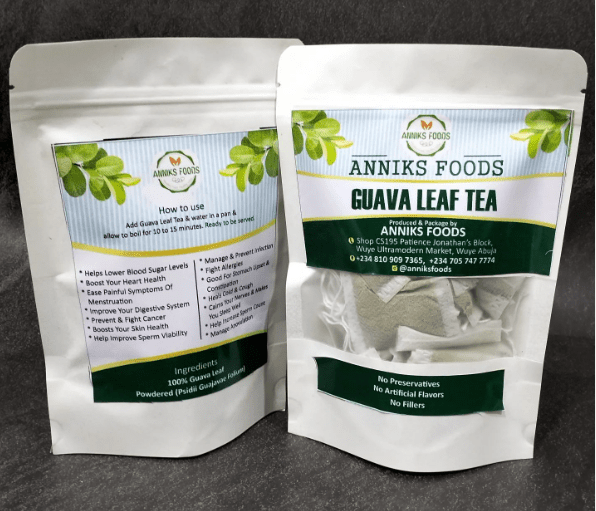The current cost of living crisis is encouraging people to find additional sources of income to cover rising food, petrol and energy bills. So-called ‘passive’ income can be a good way of supplementing your household earnings to provide a safety buffer when finances are tight.

Fortunately, there’s a growing number of passive income options, with the pandemic opening up innovative ways to earn much-needed extra money. Let’s take a closer look at how you could earn a passive income.
What is a passive income?
Passive income refers to income that does not need a significant commitment of time or money. Although most passive income ideas involve some initial resources, they should require only minimal monitoring on an ongoing basis.
Advertisement

To order your copy, send a WhatsApp message to +1 317 665 2180
There are three main types of passive income streams:
- Investing: generating a return from investing money in saving accounts or the stock market.
- Asset sharing: selling or renting out assets you own, such as your house or car.
- Asset building: examples could include adding revenue-generating affiliate links to your blog or website or selling resources such as ebooks, educational content, music and photos online.
While all these categories have the potential to generate a substantial income, here’s some suggestions for popular ways of earning a passive income in Australia.
Ideas for creating income
Dividends from investments
Dividends are paid by companies to their shareholders and can provide a good passive income stream if you have available funds to invest. Furthermore, Australian listed companies are among the most liquid in the world, meaning that shareholders can buy and sell with relative ease.
The dividend yield is a fairly reliable indicator of the ‘return’ on your investment, which is similar to the annual rate on a savings account. It is calculated as the dividend payment divided by the price of the share (or investment). So if a company with a share price of $100 pays an annual dividend of $4, the dividend yield would be 4%.
Some of the best-performing companies on the Australian Securities Exchange (ASX) have known to offer yields of 10% or more. However, caution should be taken over instances of very high dividend-yielding shares, which, on occasions, can occur when there’s a sharp fall in share price, artificially inflating the yield. This means fundamentals other than dividend yield should also be considered when researching whether to buy shares in a company.

There are three main ways to earn a dividend stream from investments:
a. Company shares
Australian companies typically pay dividends in cash on a half-yearly or yearly basis. The company will announce to the market its ‘ex dividend’ date, which may also involve a letter to shareholders outlining the return they are to receive based on the company’s performance. Shareholders must own the shares on the ex-dividend date nominated in the letter; if you bought shares after this date, you are not entitled to receive payment.
In Australia, a tax break, known as a franking credit, is issued to shareholders with their dividends which can often mean more money in your hip pocket. As the dividend pay-out has already been taxed—in the form of the company tax paid on profits—the shareholder will receive the franking credit that, depending on his or her individual rate of tax, may allow them to receive a rebate on their income tax. This prevents the dividend money from essentially being taxed twice.
Some investors elect to reinvest their dividends into the company, thereby increasing their holdings and potentially compounding their profits. However, there can be a trade-off between dividend pay-outs and share price growth. ‘Growth’ shares such as Tesla, Amazon and Meta have not historically paid dividends, preferring to invest surplus cash to generate future growth.
By comparison, the more traditional, ‘blue chip’ companies tend to pay higher dividends. The UK’s Investors’ Chronicle reports that the average dividend yield for the UK’s FTSE 100 and the US Nasdaq is currently 3.3% and 0.7% respectively. This illustrates the higher proportion of dividend-paying, industrial companies in the FTSE 100 compared to the technology-heavy Nasdaq.
b. Investment trusts
Investment trusts invest in assets such as shares, and the majority of trusts pay dividends.
As with shares, dividend yields should be considered alongside other factors if you’re looking to buy into an investment trust, particularly its future prospects for share price growth. There is a variety of investment trusts from which to choose, including specialist equity income trusts and trusts focused on different sectors such as technology, property and commodities.
In particular, Real Estate Investment Trusts (commonly referred to as REITs) are a common way for Australians to invest their money into varying commercial property segments, such as retail and industrial, without the hassle of becoming a landlord.
Many commercial property REITs focus on a particular sector, such as warehouses, hospitals, office buildings or shopping centres and are popular among those seeking exposure to the sharemarket. Australian REITs are listed on the Australian Stock Exchange (ASX), and are known as A-REITs.
Although they represent physical assets, REITs are listed and traded like stocks and many investors are drawn to them for their dividend and diversification appeal. However, they are just as vulnerable to the vicissitudes of share market movements as standard stocks: some may argue they are even more exposed because REITs are often highly leveraged.
It’s important to seek advice on whether your financial situation would be improved by the addition of a A-REIT to your portfolio. It’s important in any passive-income scenario to look beyond the dividend pay-out to ascertain whether your investment is likely to pay off in the long-term and meet your financial goals.
c. Managed Funds
As its name suggests, a managed fund is one in which a manager actively oversees the investment of pooled money, dispersing the investment into a range of financial products, such as cash, shares, bonds and listed property trusts.
Some investors opt for passively managed funds, such as an ETF, in which the fund tracks an index or commodity that can be bought and sold on the ASX. Others prefer actively managed funds in which the fund manager uses his or her expertise and financial acumen to actively select the financial products. Some funds, known as single-asset managed funds, focus on a single asset class, such as cash, bonds or shares. Other people prefer to invest in a range of assets, from growth (which are higher risk) to conservative funds (which are lower risk, but may also offer lower returns).
When you pool your money with others into a managed fund you buy what is referred to as ‘units’, the value of which will rise and fall with the value of the underlying assets.
Many managed funds pay income or interest on the investment after a specified time period. They are often the first port of call for new investors as the barriers to entry are quite low: you can get started in a managed fund for around $5000. However make sure you investigate the fee structure of the fund and your tax implications.
Interest from savings accounts and bonds
a) Interest returns
Lodging your money in a savings account also produces a passive income. Easy-access savings accounts are currently paying up to 3% in one or two instances for younger savers, while regular saving accounts offer rates of up to 2%—well below the soaring costs of inflation, currently at more than 5% in Australia.
However, as the Reserve Bank of Australia continues to lift the cash rate, pressure will build on Australia’s banks and financial institutions to lift the rates on savings accounts in line with mortgage variable interest rates.
It is worth reviewing the interest rate on a regular basis as it may include a limited-period bonus rate. In addition, you may not qualify for the higher rate if you withdraw too much money or do not deposit enough into the account. Check the terms and conditions before you sign up.
Although investing in savings accounts is lower-risk than the stock market, the average return has also historically been lower. Given the current inflation rate of 5.1% in Australia, money invested in savings accounts paying an interest rate of 2% will be effectively losing more than 3% in real terms each year.
Nevertheless, your money is safe in the bank thanks to the Government’s Financial Claims Scheme, which protects consumers’ deposits up to $250,000 per person, should the institution fail.
b) Government bonds
Government bonds are popular among more conservative investors as they are generally a safer bet. Under the scheme, investors lend money to a company in return for regular interest payments, called coupon payments.
Bonds pay interest at regular intervals and if you hold them to maturity, they offer investors a reliable return.
You can buy and sell government bonds on the ASX.
c) Company bonds
Company bonds are another option for those seeking a reliable source of income. These corporate bonds are riskier than government bonds as if the company goes bankrupt then you stand to lose your investment.
Although, it’s worth keeping in mind that if a company does go bankrupt then bond holders are usually paid out before shareholders, making them a less-risky investment.
Be aware that in December 2021, ASIC issued an alert to investors about the existence of several fake Treasury Bond offers that are, in fact, scams. Financial institutions are not authorised to issue Treasury Bonds on behalf of the Australian Government.
Income from property
Investing in property can generate a substantial passive income, either from long-term rental or short-term holiday lets. However, this involves a significant up-front investment, as well as ongoing maintenance and management of the property. Landlords in Australia benefit from substantial tax breaks in relation to property investment, primarily in the form of negative gearing, which allows investors to claim a portion of their expenses from the rental back on tax—assuming the income of the investment is less than overall outlay on the property.
In Australia, property investors who have held the property for at least a year, are also entitled to a 50 per cent discount on the Capital Gains Tax (CGT) paid on any profit from the sale of the home.
Keep in mind, however, that while there is favourable tax treatment for property investors in Australia, there is no such thing as a sure-fire investment with guaranteed profit. With interest rates rising and talk of property prices falling across Sydney and Melbourne, investors would be wise to conduct their due diligence to ensure property is the right investment for them.
Final thoughts
As with any investment, you should consider the level of risk associated with the product and whether you are able to absorb any losses. In most cases, income tax will be payable on passive income, so speak to you accountant and financial advisor so you’re well prepared.
Also keep in mind that passive income is a bit of a misnomer in that there is no such thing as truly dormant investments. Whether it be shares or property, each asset class involves a degree of research and due diligence, at least to begin with. However, by doing your own research from the get-go, and conducting the proper checks and balances in the early phases, you can choose the right ‘passive’ income stream for you.
Note: When investing, it’s possible to lose some, and very occasionally all, of your money. Past performance is no prediction of future performance and this article is not intended as a recommendation of any particular asset class.
Forbes


















